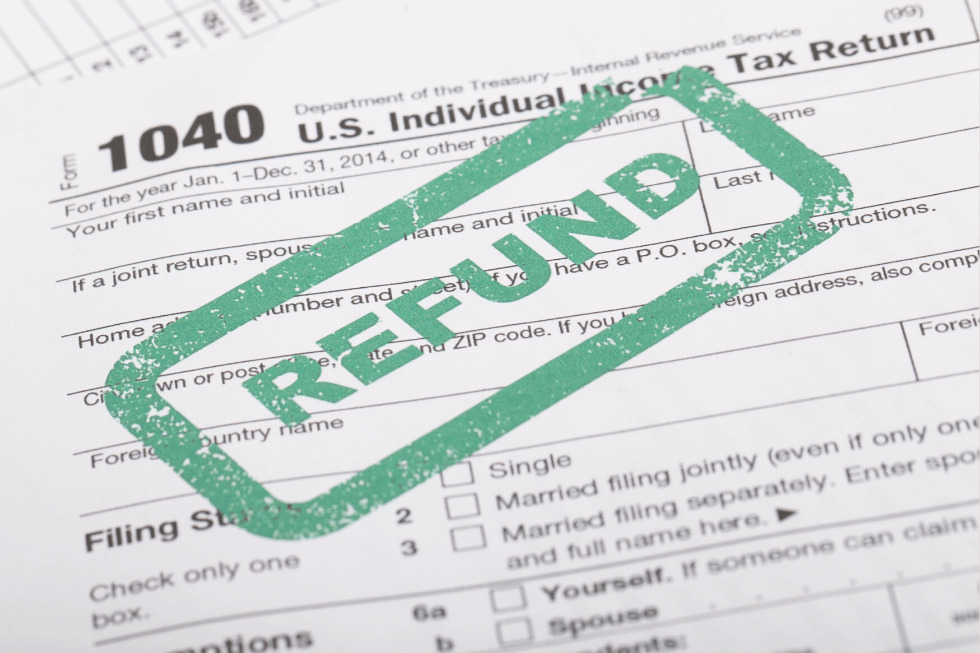It is true that I am a grown woman. It is also true that I had to play mental games with myself in order to trick myself into saving money. #adultingishard
Think back to your college years…maybe waaay back ;-)… It’s 10pm the night before final exams. Where are you?
Are you sound asleep in bed and getting plenty of rest for the big day ahead? Or are you sitting under a lamp with your textbook in one hand and a bottomless mug of coffee in the other?
Odds are you’re in the latter camp—not because you lack time management skills; simply because that is how we humans are wired.

This tendency to use every last second we have is known as Parkinson’s law, which states that “work expands so as to fill the time available for its completion.”
We will use up whatever time we have for any given task. If that business proposal is due Friday at 5pm… chances are you are sending it over Friday afternoon, not a few days before.
This same principle also applies to other areas of our life. Have you ever been on a crash diet to get “bikini ready” for an upcoming vacation that you had months to prepare for? Yep, that’s Parkinson’s law in full effect.
The problem for us is that our human inclination to use every last drop of our available resources doesn’t work in our favor when it comes to things like building long-term savings. Building a nest egg that we’ll need 30-years down the road is all too often set to the side for the immediacy of today’s living expenses.

Or have you felt broke and thought, “if I just made a little more money, it would be so much easier to get by each month.” And then you get that raise, but you still feel the same? Parkinson’s law applies here, too. No matter how much money (like time) we have, our expenses adjust to use it all up. That’s why you can still feel like you’re living paycheck to paycheck, no matter how much money you make.
Think back to your first “real” job. Do you think you could live on that salary today? No way! But you did it when you had to.
So how are we supposed to win this seemingly losing battle with our innate nature?
Don’t Fight Mother Nature
When I took surf lessons during a brief stint down in Costa Rica, I kept getting frustrated that my timing was not quite in tune with the timing of the waves. I tried hard to get myself ready for a good wave by watching the water’s surface and trying to read its distance and speed in my head. But every wave is different, and when I wasn’t ready for the wave that came, I wiped out. Mother Nature, as it turned out, does not wait for me to be ready for each wave. I had to learn to stop trying so hard to conquer the waves in the way I wanted them to come and start responding more intuitively to the synch up with the varying waves in a way that would allow me to stand up and ride the wave in.
My point here is that fighting Mother Nature does not work. When our human nature is to fully use the resources available to us, saving for retirement can feel impossible—like we’re fighting an ocean current that will always win.
For years, I tried different budgeting strategies and ways to trick myself into saving money, but somehow my bank account never grew the amount I had hoped for… until I learned this one simple system that made it painless and effortless to build my savings.
My first year doing this, I went from saving 8% of my annual salary (which I considered a success at the time) to saving 35% the very next year—without any major effort or stressing out. I did make a modest raise from year to year, but it was nowhere close to the increased amount that I was able to save.
Since I implemented this system to trick myself into saving money, I no longer stress about how to manage my finances. I feel total peace of mind knowing that my savings are accruing without me having to do anything, and without me getting in the way with my impulse purchase.
The Failproof Formula I Used to Trick Myself into Saving Money Painlessly
The first thing you want to do is figure out how much money you want to save for both long-term and short-term savings goals. When you create your budget, make sure you prioritize your savings goals first.
If you are just starting off, target 10-15% of your take-home pay for long-term savings, in addition to any short-term savings goals like purchasing a new car.
Once you determine your savings goals, you will want to create separate bank accounts for your long-term and short-term goals.
Success secret #1: Out of sight, out of mind
The secret to making this easy for yourself is: Open these separate savings accounts at different banking institutions than where your current checking and credit card accounts are held.
“Why on Earth would you do that?” I can hear you ask. “Isn’t that just one more thing to manage and a bit of a hassle?”
While technically, yes, this is one more account in your portfolio, the reality is you should not be “managing” this account or touching it at all on a month-to-month basis. This is your savings account where you are building a reserve. You should just put money in and leave it alone.
Keeping this account at a separate bank is key so that you don’t have to fight your natural urge to spend when you see funds just sitting there, available, every time you log in to check your account balances. This is how I had to trick myself into saving.
Before I changed my ways, I always kept my checking and savings account at the same bank so I could see everything in one place. Convenient? Yes. Too convenient.
With this setup, I had a “slush” fund to transfer money to my checking if I needed to float some money between paychecks. My budget was merely a suggestion.

When I really wanted something, like that ski trip to Tahoe with friends, I saw the money sitting in my account and knew I could just transfer it to my checking with the click of a button and be on my merry way to the slopes.
I would put money into my savings account each month because I knew that’s what I should be doing, but all too often I just took that money right back out for mostly ‘want’, not ‘need’, expenses. My savings account became a rotating fund, and the savings never really built up.
Somewhere along the way, the light bulb clicked. My show of self-control when it came to saving money was a joke. I knew I had to find a better way.
At the time, my big financial goal was to build a 6-month emergency fund, and I wasn’t going to ever get there if I kept taking money out every time it went in.
So I searched online to find an account where I could get the highest APR. Initially, I was looking for a high-yield savings account, but at that time, the Capital One 360 Money Market® account, had nearly double the APR of my investment institution and turned out to be the best option for me. I created an account by filling out an online application in just a few minutes and then depositing what little savings I had at that time.

From the very get-go, this created a surprisingly different way of thinking for me. As soon as I didn’t see the money in my regular bank when I logged in, the money wasn’t available to me in my mind. Intellectually, I knew I had put some savings ‘over there’ in that money market account, but it just didn’t feel like it was really there for me to use. It felt distant and off-limits.
Success secret #2: Automate that shit
Once I had the framework in place of having a hidden-from-my-view account to stash cash, I needed to develop a way to consistently add money to it.
From my many, many different attempts at budgeting, I knew that if I waited to put what I had left at the end of the month in my new emergency fund account, that was never gonna happen.
I had to be more proactive than that if this was going to work.
Since the common denominator in all my money-saving problems seemed to be… well… me, I decided to remove myself from this part of the equation, too.
I checked in with my HR department, and it turns out I could split my direct deposit between multiple accounts. So I did just that.

I had an aggressive savings goal to save 25% of my take-home pay each month until I had a 6-month emergency fund built up.
I changed my direct deposit so that 25% of my paycheck went directly to my new emergency fund account without ever touching my greedy little hands! And because it went to an account at a separate institution, I never even saw it nor was tempted to spend it. This is how I was able to trick myself into saving my money.
The combination of the account at separate bank and the auto-deposit was a game changer. My savings grew faster than ever before.
If you’re self-employed, a contractor or don’t get paid by direct deposit on a regular schedule, there is still a way to make this work for you.
Every time you get paid with a check, transfer a percentage to your savings account at the same time as you deposit the check. For example, if I were to keep my 25% savings goal and I received a check for $1,000, when I deposited the check, I would also transfer $250 to my ‘hidden’ savings account. This has become standard practice any time money comes my way.
By never having the money in your checking account, you will avoid the temptation of thinking you have it to spend in the first place.
Don’t stop, get it, get it
So I did it! With this method, I was able to trick myself into saving 35% of my income in one year—fully funding my emergency fund and saving towards my next big purchase.
Because the money never touched my hands and I really never saw it, except for now and then when I’d check in on my separate bank account, the savings grew without me even having to think about it or “manage” my savings.
Today, I have my direct deposit going towards three separate accounts: 15% of my take-home pay gets directly deposited into my IRA (since I don’t have a 401K option), 10% goes towards long-term saving goals, 10% goes directly to an account set up for my short-term savings goals (saving for a car), and the remainder goes to my checking account that pays my rent, utilities, bills and fun.
I’m not even breaking a sweat to save money anymore because I’m not fighting my natural urge to spend all that I have. I have grown accustomed to living within my income—after savings have been deducted. Don’t get me wrong; I still need to budget for my checking account every month and follow my plan, but knowing my savings account is growing automatically gives me enormous peace of mind.
If I didn’t siphon off my savings first as my top priority, I know I would struggle and feel stressed and frustrated wondering why my savings wasn’t growing as I planned. I know this because I did that for many years.
The reality is I am able to not just survive, but thrive, on an average salary by prioritizing my saving, and budgeting to spend my remaining income on those things that are most important to me. By hiding my savings accounts from myself to trick myself into saving, I no longer sabotage myself.
Go Get ‘Em, Tiger

When it comes to saving for your future and establishing your financial freedom, you are facing an uphill battle if you try to force yourself to act in ways against your nature. Trying to save money that is staring back at you and suggesting “it’s o.k. to spend me” is a losing proposition for most people.
Start setting up systems today that work with your natural inclinations and you will have a much easier time building your nest egg. It will become painless and automatic to save money so you can focus on other areas of your life with the peace of mind that your financial future is building itself.
Your action steps:
- To save money, open a high-yield savings account or a money market account at a separate bank from your main accounts.
- Check with your HR department to see if/how you can funnel your direct deposit to multiple accounts, OR
If you get paid by checks/cash instead of direct deposit, commit to immediately deposit 10-15% of every payment to your savings account. - Set it and forget it!
I promise you this works. If I can trick myself into saving money, I know you can, too. Comment below if you have any favorite savings accounts you’d recommend or other hacks to make your savings plan work for you.





